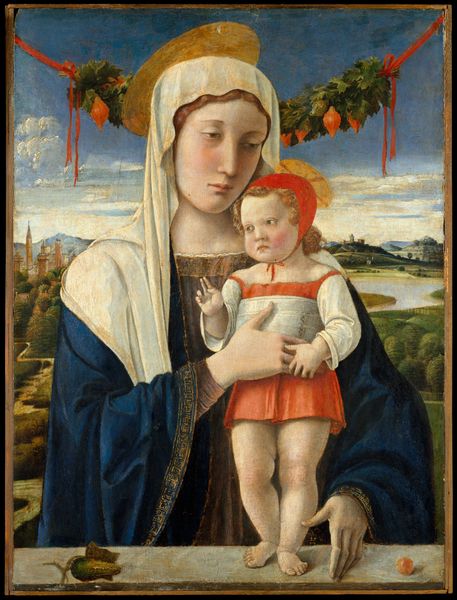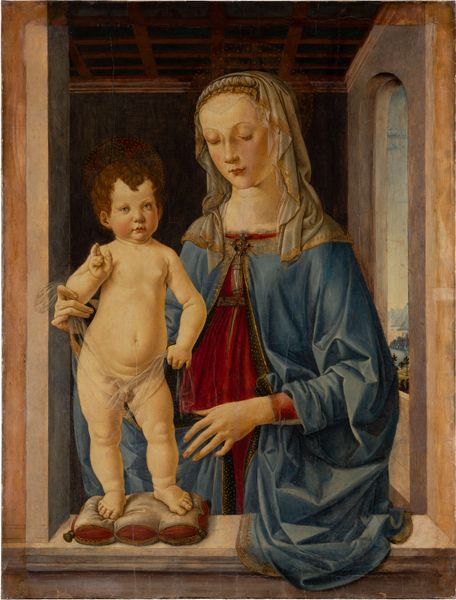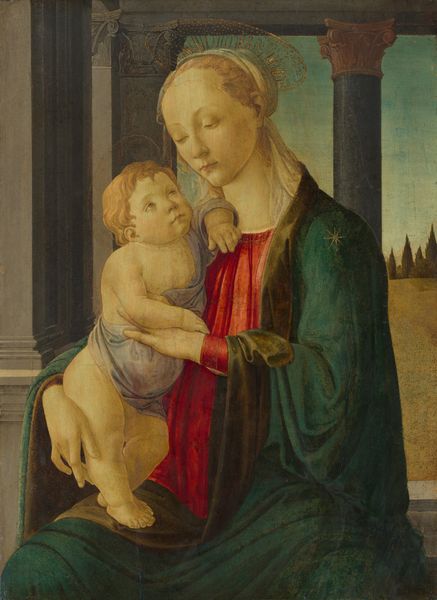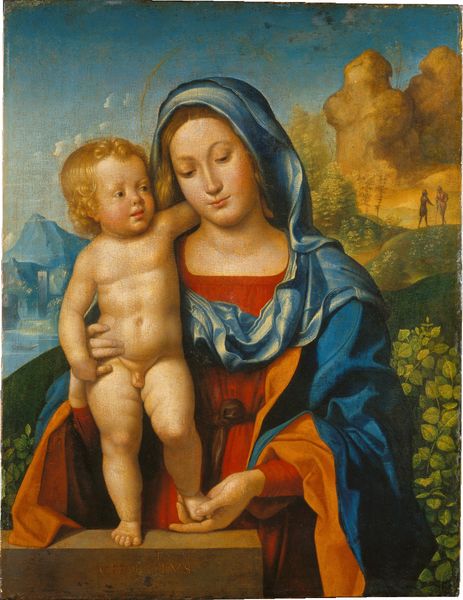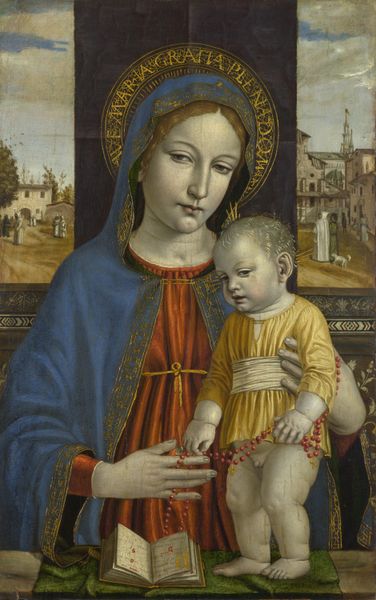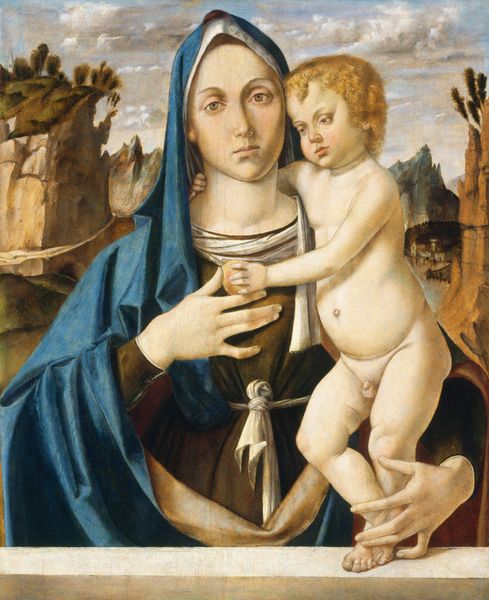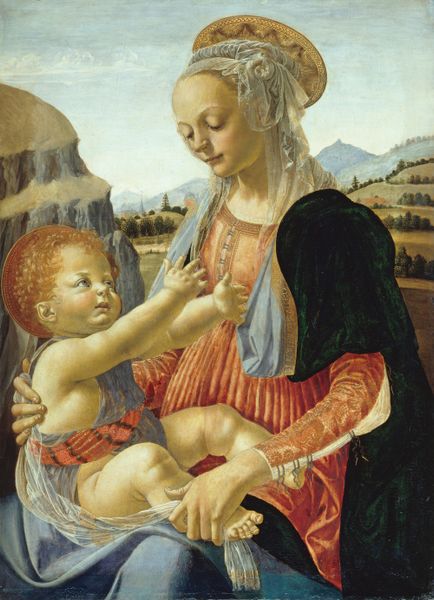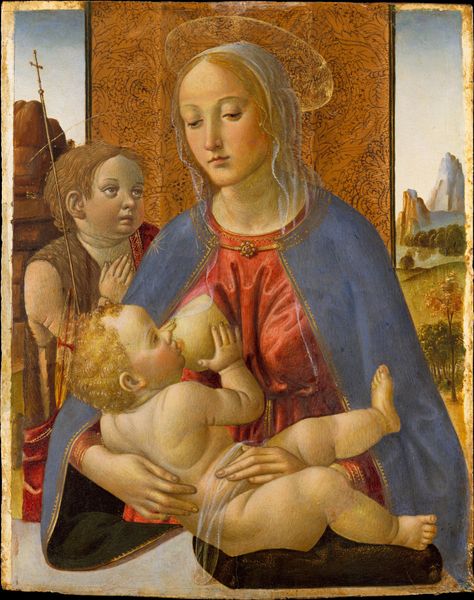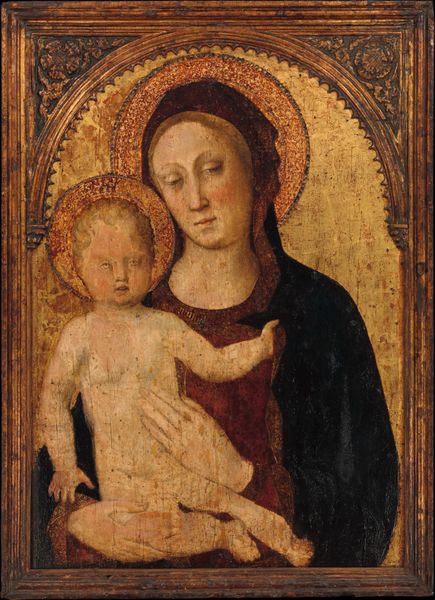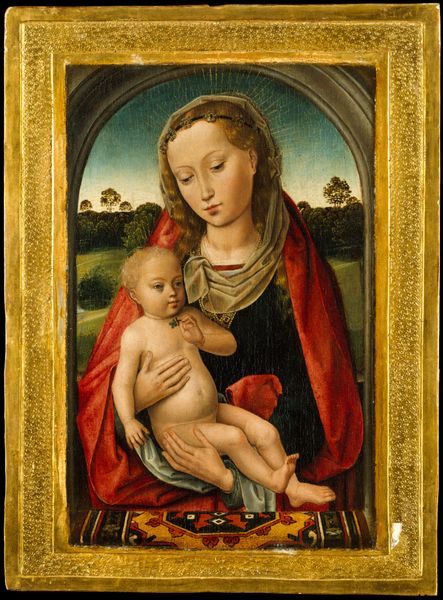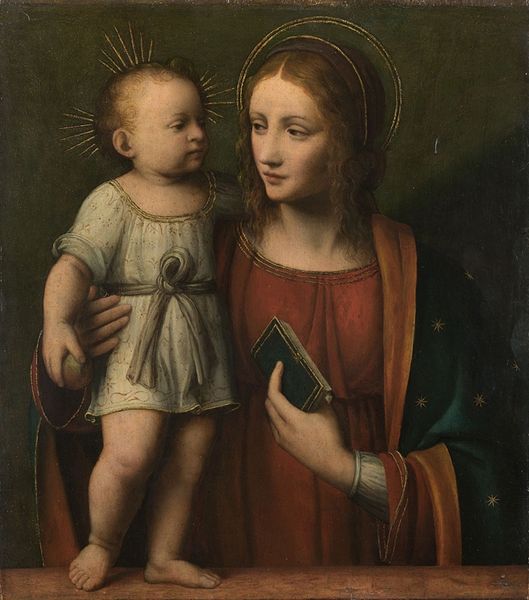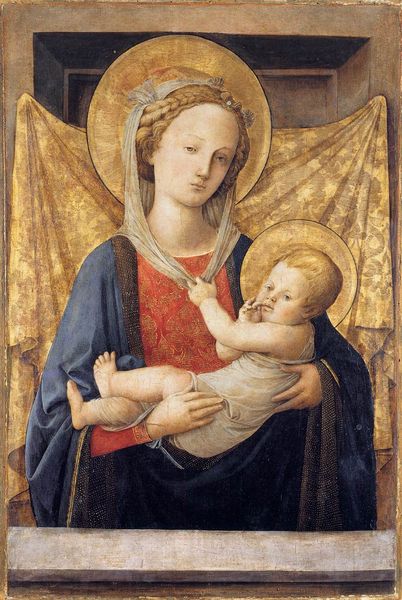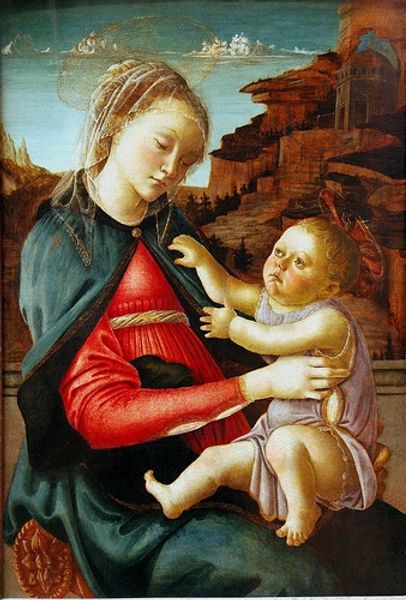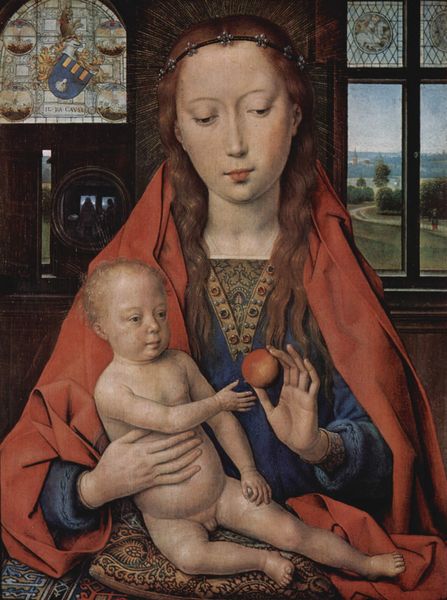
painting, oil-paint
#
portrait
#
painting
#
oil-paint
#
figuration
#
oil painting
#
child
#
italian-renaissance
#
early-renaissance
#
portrait art
#
fine art portrait
Copyright: Public domain
Andrea del Verrocchio painted this Madonna and Child sometime in the second half of the 15th century. The painting displays a tender, intimate scene, but it also speaks to the social role of religious imagery in Renaissance Florence. Consider the specific codes of representation: Mary’s modest gaze, the child's cherubic features, and the halos, which indicate holiness. These are all well-established ways of depicting religious figures. Verrocchio was working in a city that was, at the time, deeply religious and also increasingly wealthy, due to banking and trade. Wealthy families, like the Medici, were the main patrons of the arts and they shaped artistic production. Verrocchio’s workshop trained artists, including Leonardo da Vinci, who spread the style of art that the institutions of Florence fostered. To truly understand this painting, we might consult religious texts, historical records of Florentine society, and studies of artistic patronage during the Renaissance. This artwork is a product of its time, reflecting both its religious devotion and its social structure.
Comments
No comments
Be the first to comment and join the conversation on the ultimate creative platform.
